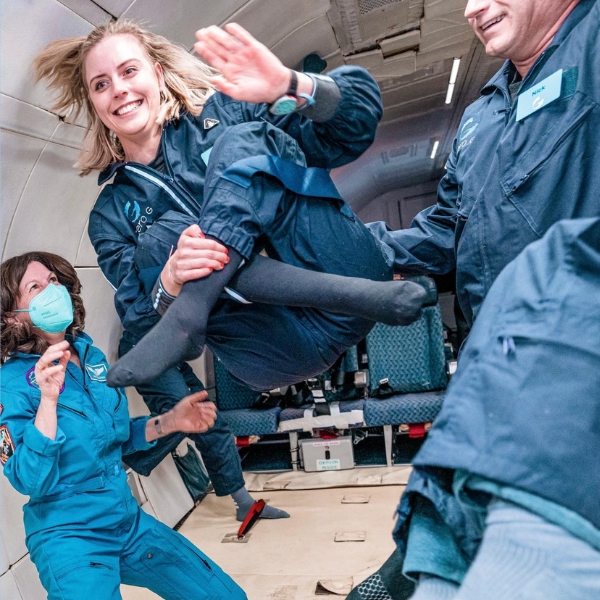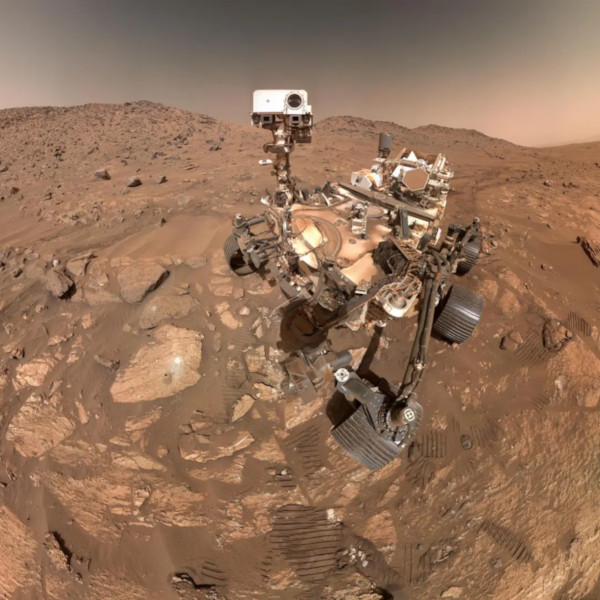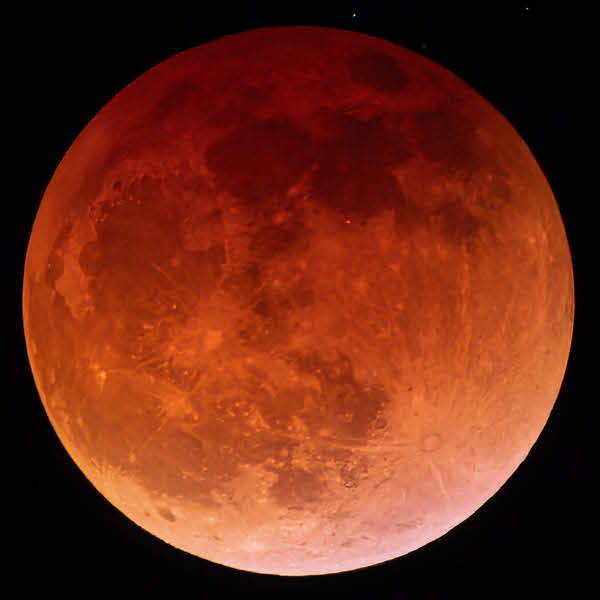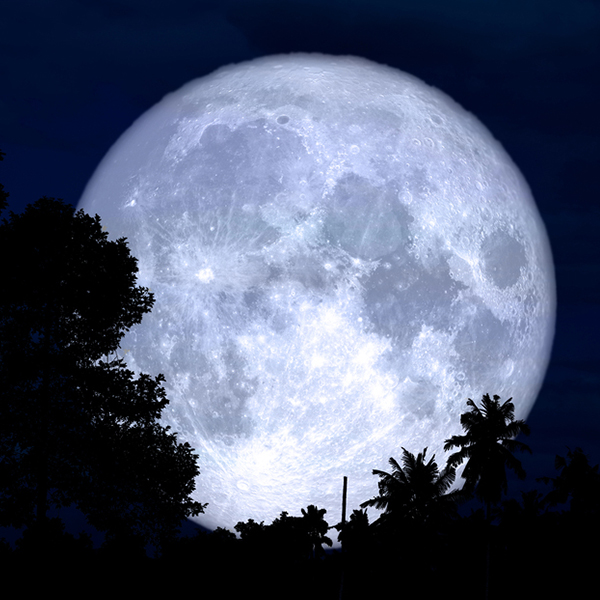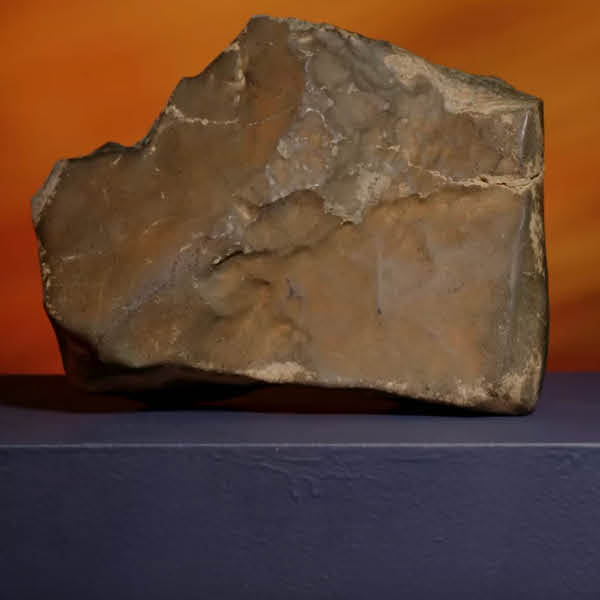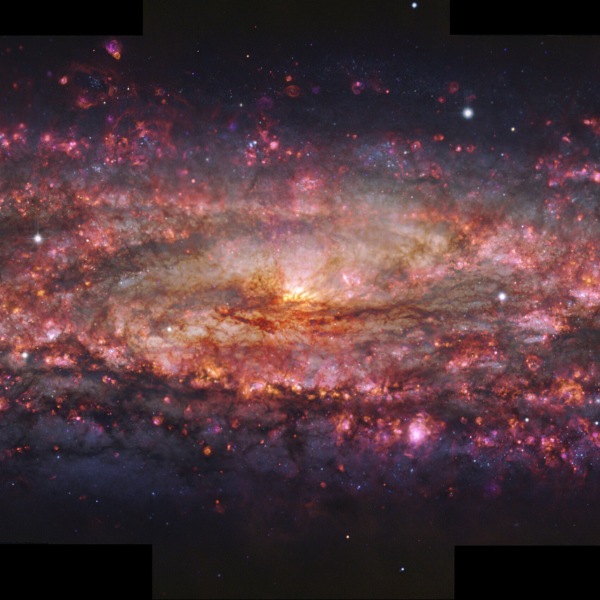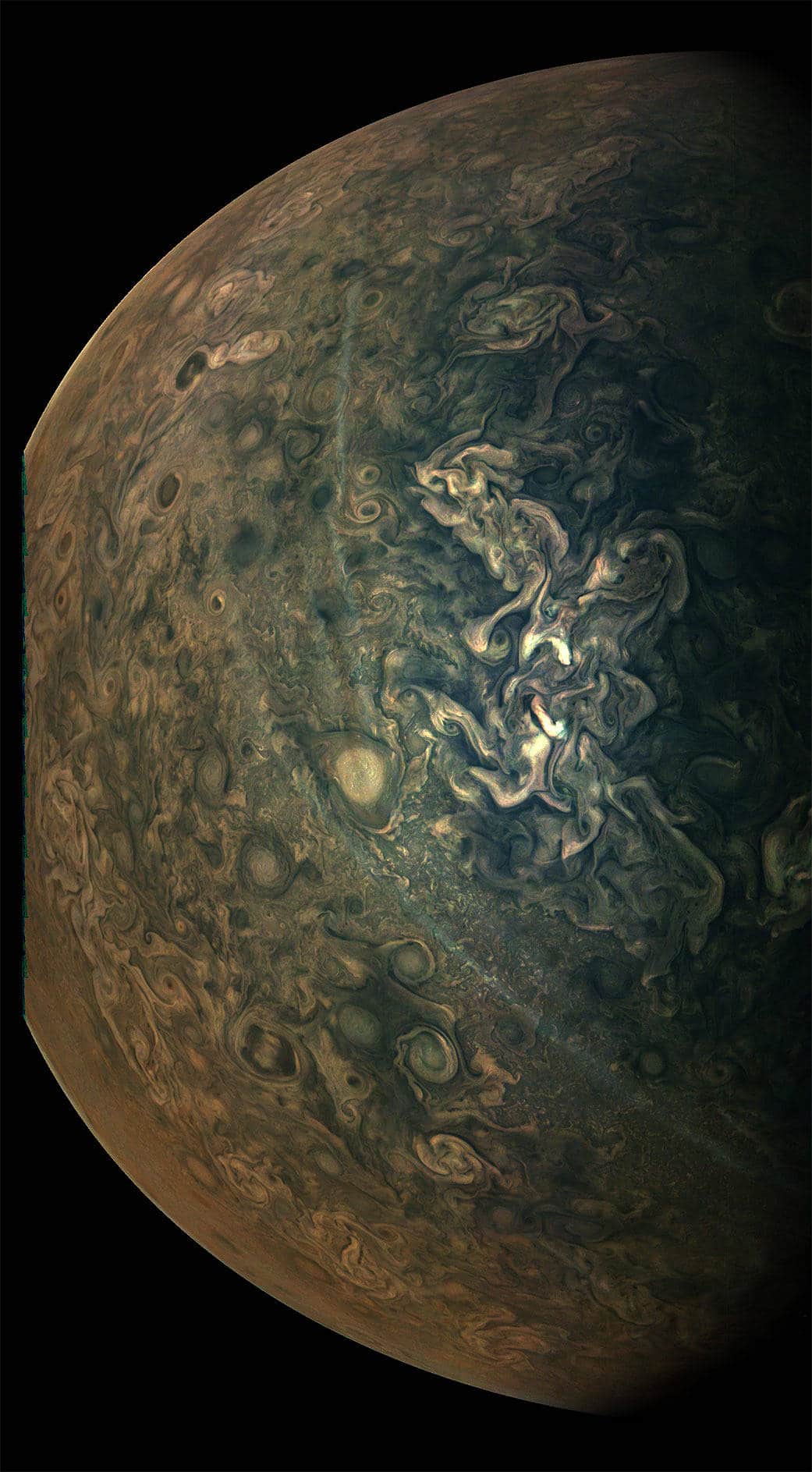
NASA’s Juno mission captured this look at Jupiter’s tumultuous northern regions during the spacecraft’s close approach to the planet on Feb. 17, 2020. (Photo: NASA / JPL / SwRI / MSSS; Image editing by Gerald Eichstädt)
Since first landing on Jupiter in 2016, NASA's Juno space probe has provided us with a wealth of information about the solar system's largest planet. In particular, its JunoCam—which beams back photographs taken by the probe—has allowed the public to see incredible visuals of Jupiter. NASA has highlighted one image in particular from Juno's 25th flyby of the planet, also known as a perijove. What stands out immediately are two thin lines that move up Jupiter from top to bottom.
What are these stripes? Researchers have noticed these bands since Juno's first close flyby in 2016. NASA describes them as “layers of haze particles that float above the underlying cloud features.” Though scientists aren't exactly sure, their location may give us insight into what they're made of and how they form. In this photograph, the lines are flanked by two jet streams in Jupiter's atmosphere. Some researchers believe that these jet streams could influence the formation of the haze.
This photograph is one of many images processed from RAW data by the JunoCam. NASA publishes these photos regularly and allows the public to process them and post them back to NASA. Citizen scientist Gerald Eichstädt, who worked on this image, regularly contributes and his excellent work helps transform the RAW images into visually pleasing work for the public.
In fact, another photo taken during perijove 25 is equally as stunning. Processed by Eichstädt and Seán Doran, another regular contributor, it shows a closeup detail of Jupiter's swirling clouds. If you're interested in seeing more finish photos or taking a stab at your own post-production, check out NASA's dedicated Juno website.
NASA released an amazing gallery of photos of Jupiter taken by Juno, showing the large planet's swirling atmosphere and two mysterious streaks.

During its 24th close flyby of Jupiter, NASA’s Juno spacecraft captured this view of a chaotic, stormy area of the planet’s northern hemisphere known as a folded filamentary region. (Photo: NASA / JPL / SwRI / MSSS; Image processing by Kevin M. Gill)
Here are more of NASA's mesmerizing images of Jupiter.
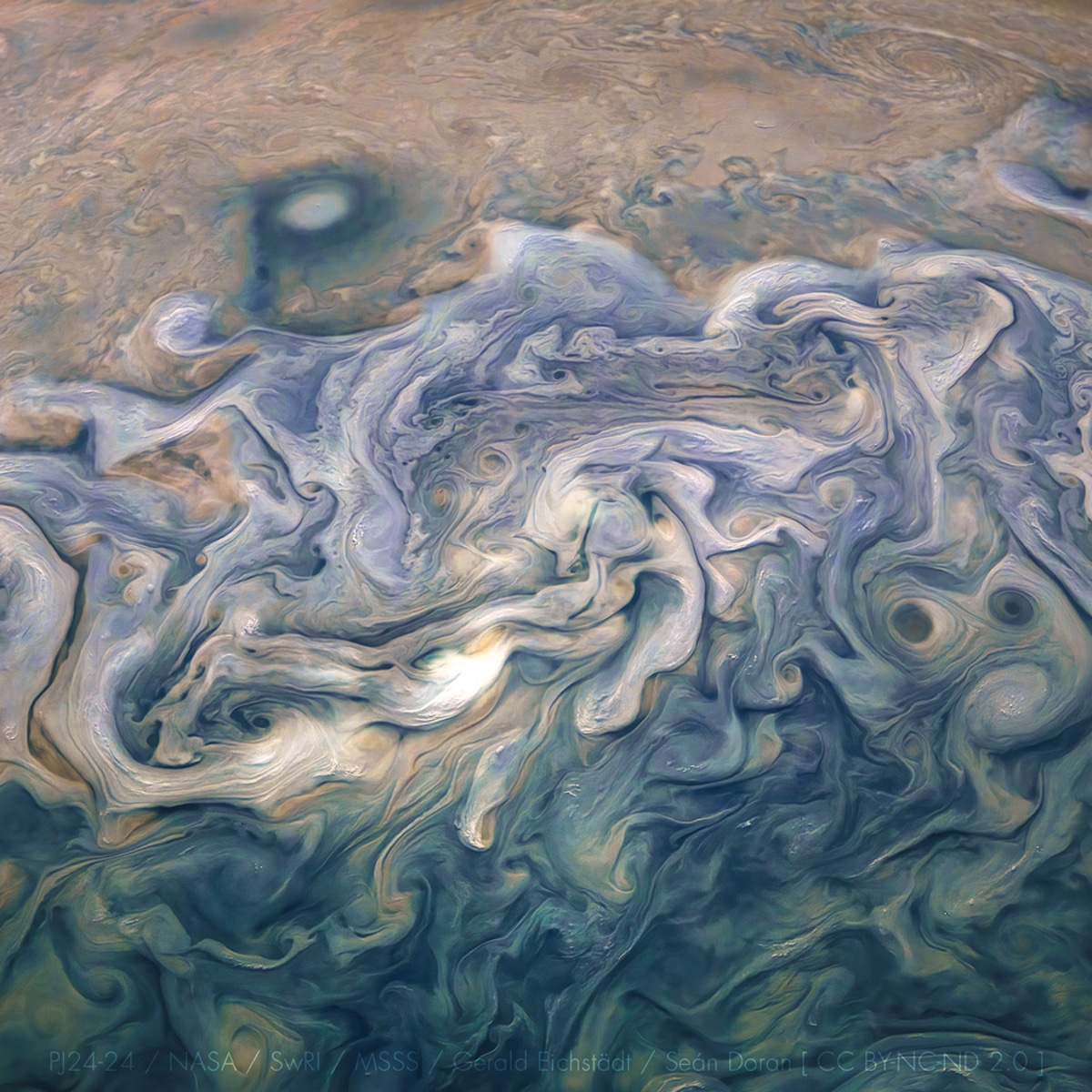
Photo: NASA / SwRI / MSSS / Gerald Eichstädt / Seán Doran
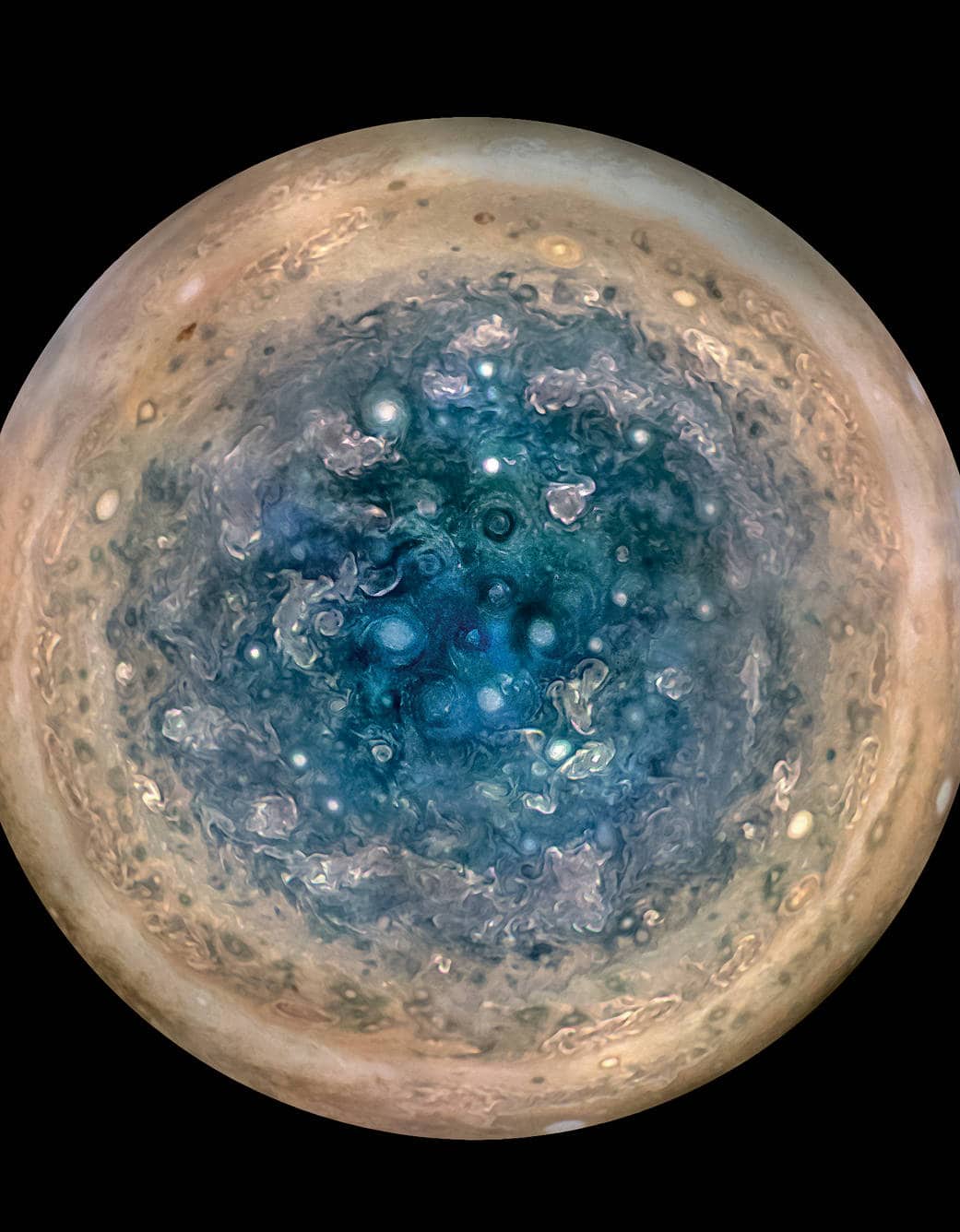
This image shows Jupiter’s south pole, as seen by NASA’s Juno spacecraft from an altitude of 32,000 miles (52,000 kilometers). (Photo: NASA/JPL-Caltech/SwRI/MSSS/Betsy Asher Hall/Gervasio Robles)
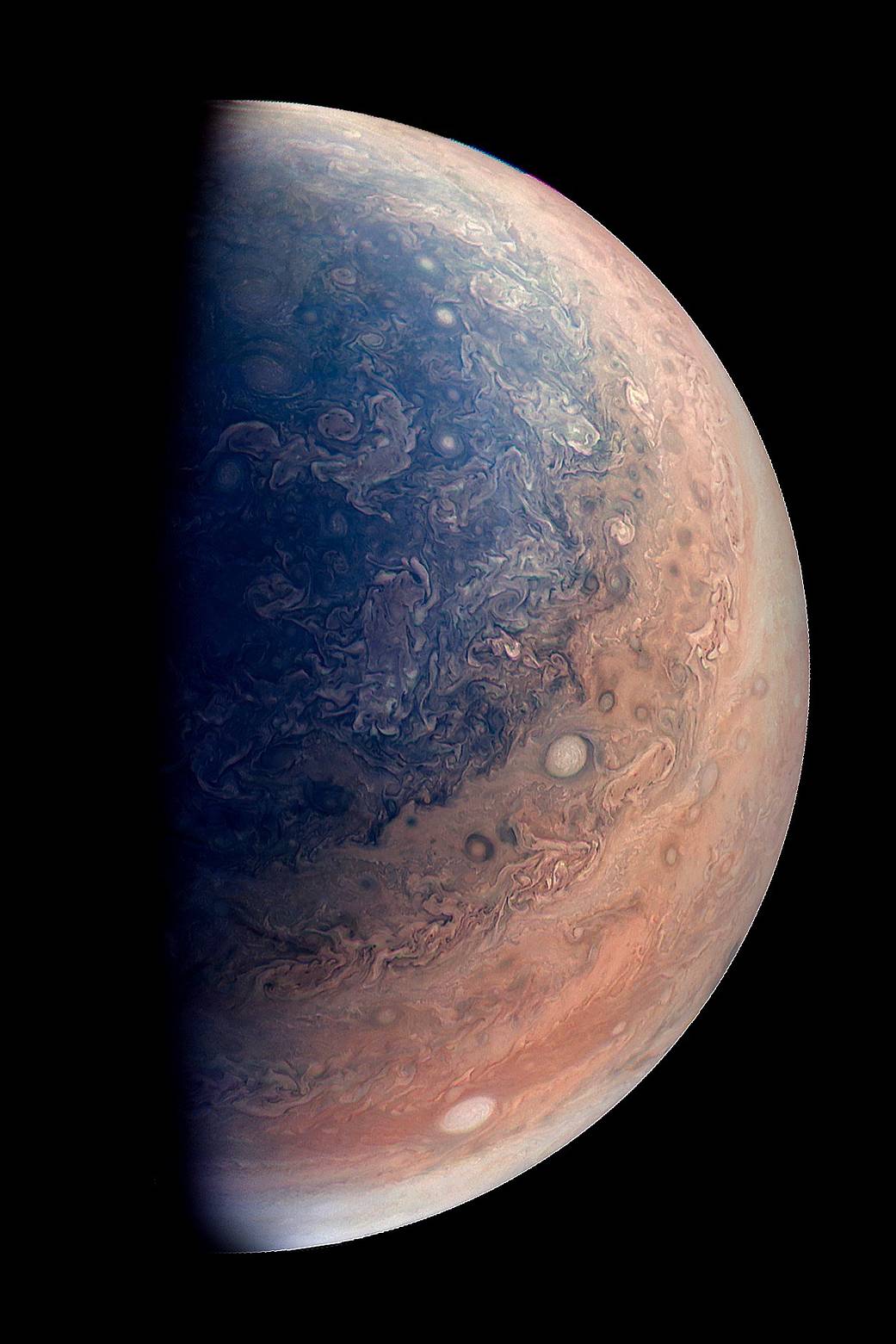
This image shows an enhanced color view of Jupiter’s south pole. (Photo: NASA / JPL-Caltech / SwRI / MSSS / Gabriel Fiset)

See intricate cloud patterns in the northern hemisphere of Jupiter in this new view taken by NASA’s Juno spacecraft. (Photo: NASA / JPL-Caltech / SwRI / MSSS / Kevin M. Gill)
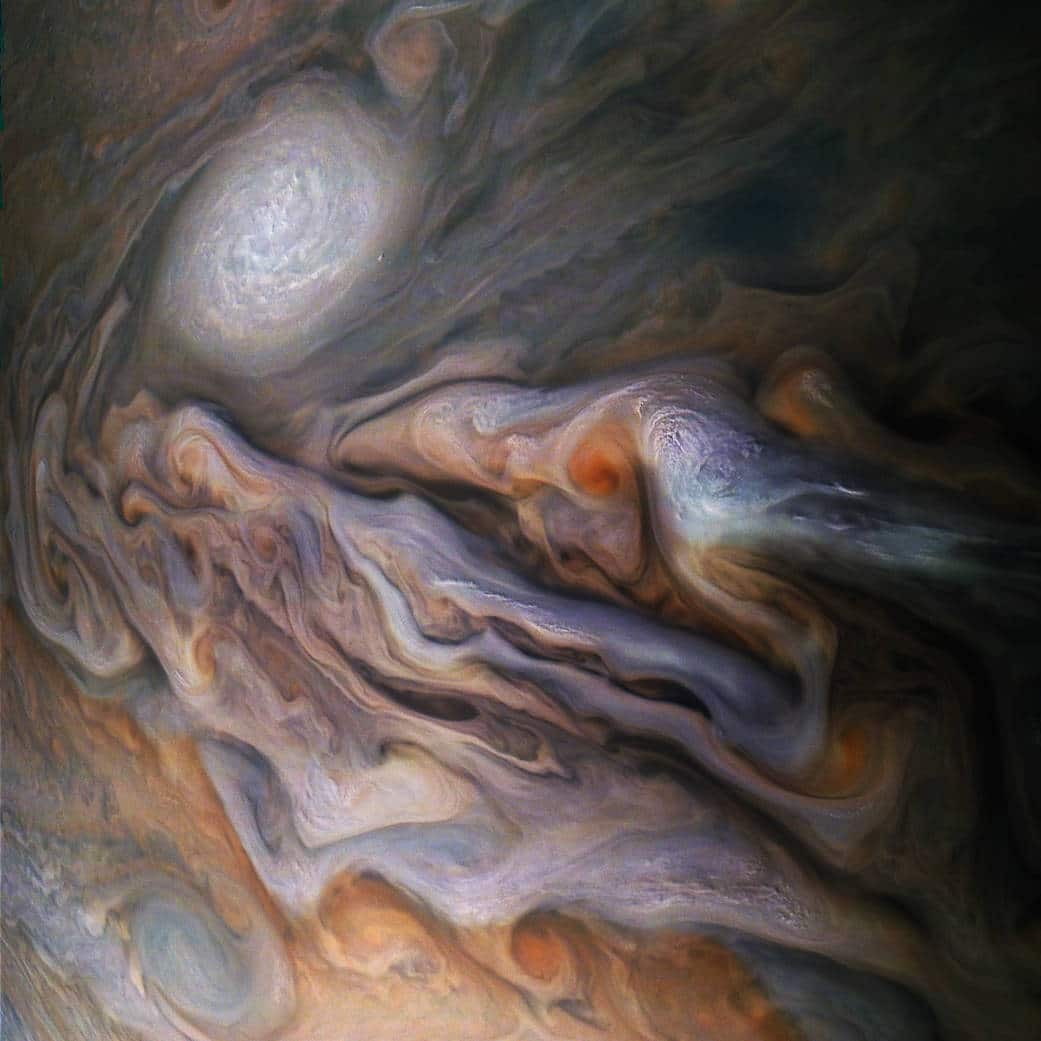
A multitude of swirling clouds in Jupiter's dynamic North North Temperate Belt is captured in this image from NASA's Juno spacecraft. (Photo: Enhanced image by Gerald Eichstädt and Sean Doran (CC BY-NC-SA) based on images provided courtesy of NASA / JPL-Caltech / SwRI / MSSS)
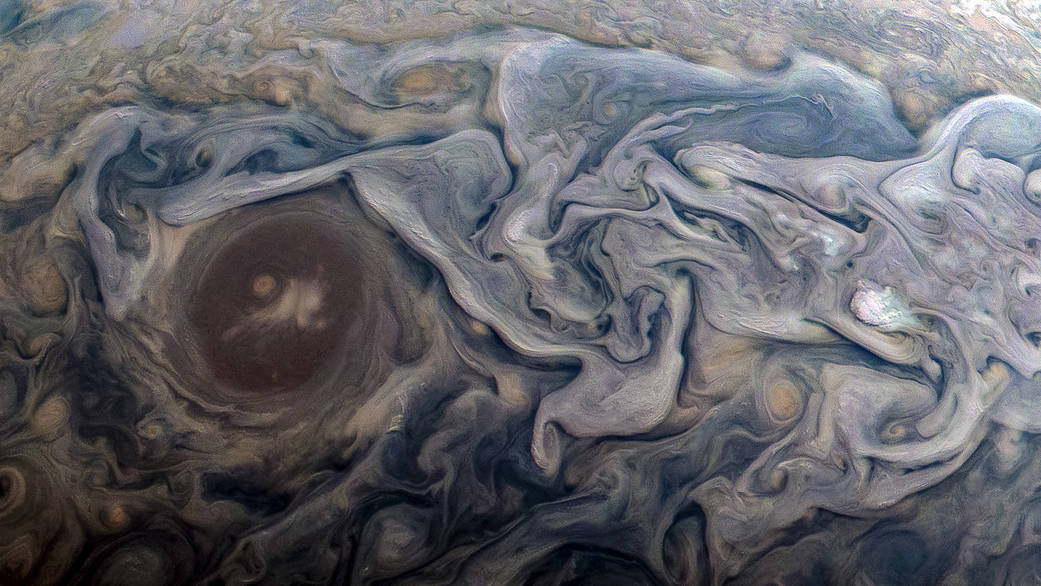
Dramatic atmospheric features in Jupiter’s northern hemisphere are captured in this view from NASA’s Juno spacecraft. The new perspective shows swirling clouds that surround a circular feature within a jet stream region called “Jet N6.” (Photo: NASA / JPL-Caltech / SwRI / MSSS / Kevin M. Gill)











































































